- Blog
- 3 Ways to Segment Your Email List: Ranked from Worst to Best
3 Ways to Segment Your Email List: Ranked from Worst to Best
-
Csaba Zajdo
- Marketing
- 6 min read
Table of Contents
In 2025, it’s essential for email marketers to send targeted campaigns to email subscribers based on their needs, preferences, and interests.
When your email marketing strategy revolves around sending relevant content to each and every subscriber, you’ll see your open rates skyrocket and build a base of loyal customers.
In order to send more segmented email campaigns, you need to create segments within your email list.
In this article, we’ll examine three different ways that you can start segmenting your email list, and rank them from worst to best. But first, let’s discuss the basics of email segmentation!
What is email segmentation?
Email segmentation is a vital email marketing strategy that involves breaking up your email marketing list into smaller, more targeted groups (called segments).
The primary goal of email marketing segmentation is to group customers into cohorts that share a common characteristic, such as an interest in a certain type of product or a geographic location.
Segmenting your email list enables you to tailor your messages to resonate more effectively with different subsets of your audience. This personalization leads to increased engagement, more customers, and overall campaign success.
The deeper your understanding of your audience segments, the more precise your messaging can be, ensuring that you deliver the right message to the right users.
Imagine you manage an online clothing store. In this scenario, you might segment contacts based on gender, sending targeted promotional emails tailored exclusively to male or female subscribers.
This is a basic example of an email segmentation strategy.
However, it’s important to note that gender segmentation represents a broad category. As a general rule, the smaller your segments, the more effective your email campaigns will be in driving engagement and conversions.
Benefits of email marketing segmentation
When you start employing some of the email segmentation strategies from this article, you’ll see more engaged customers, fewer inactive users, and more sales.
Let’s look at some of the benefits of sending relevant emails instead of non-segmented campaigns!
1. Increased open rates
By delivering relevant content tailored to the specific interests and preferences of each segment, you can cultivate a habit among your subscribers of consistently opening your emails.
When subscribers anticipate valuable content in each marketing campaign, they’re more likely to engage by opening your messages regularly.
2. Increased click-through rates
List segmentation not only leads to higher open rates but also results in increased click-through rates.
When subscribers find relevant information that resonates with them, they’re more inclined to click through to your website or landing pages to learn more or make a purchase.
The relevancy of your messaging enhances the likelihood of subscribers taking action.
3. Increased conversion rates
Email segmentation allows you to send tailored offers and promotions to target customers who are more likely to be interested in specific products or services.
This targeted approach leads to higher conversions for various campaigns, such as coupon code offers, exclusive events, and referral programs.
4. Fewer unsubscribers
Effective email segmentation results in delivering content that is highly relevant and valuable to your new subscribers, thereby reducing the likelihood of them opting out of your email list.
When they consistently receive content that aligns with their interests, they’re less likely to unsubscribe from your emails.
5. Helps to avoid spam filters
Spam filters are designed to detect and filter out emails that appear irrelevant or unsolicited.
By sending targeted content to specific audience segments, you increase the relevance and legitimacy of your emails, reducing the chances of them being flagged as spam.
This ensures that your emails reach the intended recipients’ inboxes, improving deliverability and maximizing the impact of your email campaigns.
What data should you use for email list segmentation?
There are many different ways to segment your email list. Here are some popular types of data that you can use to send targeted emails to your target audience.
1. Demographic data
Demographic segmentation includes characteristics such as age, gender, income level, and occupation. By segmenting your audience based on demographic attributes, you can tailor your content to resonate with specific demographics more effectively.
How to use demographic data: Suppose you run a skincare brand. You can segment your email list based on age groups to send targeted emails promoting anti-aging products to older subscribers and acne treatments to younger subscribers.
2. Behavioral data
Behavioral segmentation involves tracking users’ website activity. This data provides insights into their interests, preferences, and engagement levels.
How to use behavioral data: If you operate an ecommerce store, you can segment your email list based on users’ online behavior, such as the products they’ve viewed on your website. Subscribers who have shown interest in specific products can receive targeted emails featuring those products or related recommendations.
3. Purchase history
Analyzing purchase history provides valuable information about users’ preferences and buying habits. Segmenting your email list based on purchase history enables you to recommend relevant products, offer personalized discounts, and nurture customer loyalty.
How to use purchase history: A clothing retailer can segment their email list based on past purchase categories, such as men’s clothing, women’s clothing, or accessories. Subscribers who have previously purchased women’s dresses may receive emails showcasing new arrivals in that category.
4. Geographic data
Geographic data utilizes information about users’ locations, often obtained through their IP addresses. List segmentation by geographic location allows you to deliver localized content, promotions, and event invitations tailored to specific regions.
How to use geographic data: A restaurant chain with locations in different cities can segment its email list based on subscribers’ geographic locations. This enables them to send targeted emails promoting local events, special offers at nearby branches, or regional menu updates.
5. Email activity
Email activity data includes metrics such as open rates, click-through rates, and engagement levels. Segmenting your target audience based on email activity helps you identify highly engaged subscribers, re-engage inactive users, and optimize your email campaigns for better performance.
How to use email activity: An online magazine can segment its email list based on subscribers’ engagement levels, sending exclusive content or special offers to highly engaged readers to reward their loyalty and encourage continued interaction.
6. Stage of the sales funnel
Segmenting your audience based on their stage in the sales or marketing funnel allows you to deliver relevant content that guides them through the buyer’s journey. Tailoring your messaging to match each stage helps nurture leads, drive conversions, and improve overall campaign effectiveness.
How to use stage of the funnel: A software company can segment its email list based on where subscribers are in the sales funnel, sending educational content and product demonstrations to leads in the awareness stage, and offering free trials or discounts to prospects in the consideration stage.
The more contact data you have, the more detailed your email segments can be. Combining different types of data allows you to create highly personalized email campaigns.
3 methods to segment email list, ranked from worst to best
These three email segmentation strategies can encourage users to both sign up for email marketing campaigns and gather data about their needs and interests. But they won’t all convert at the same level.
Let’s start off with the least effective way to gather the data you need to run segmented campaigns.
1. Ask for all information in one step
As we’ve seen, targeted email marketing relies on gathering information that allows you to segment subscribers into smaller groups. But how do you get that information?
The first popular strategy that many ecommerce sites use is asking for all the information at once.
This means that you ask for your customer’s email and additional information, like whether someone identifies as a man or a woman, or what type of products they’re interested in, at the same time.
Check out the example below for what this email segmentation strategy can look like:
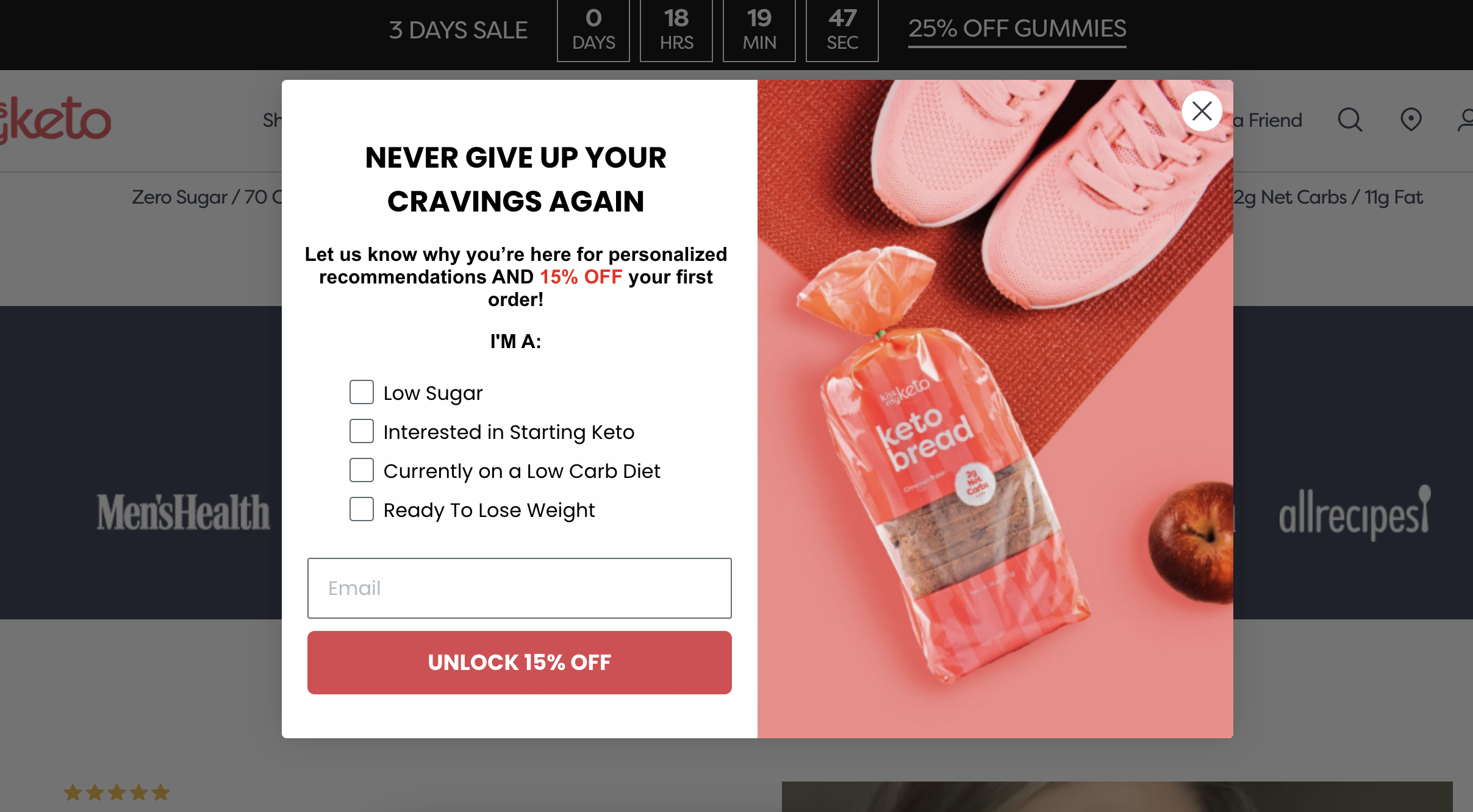
There are a few reasons that this method of gathering data from potential new subscribers isn’t ideal.
First, the signup form looks like it will take a decent amount of effort to complete, which creates a big mental barrier. The dense, complex UI contributes to this feeling, since no visitor wants to read lots of small text to understand what the options for declaring their interests are.
Second, asking for too much information at once can feel frightening, and as a result many visitors simply won’t bother.
When you consider those factors, you’ll see why a campaign like this won’t have a very high conversion rate.
2. Use a conversational popup
So, if you shouldn’t ask for all the information you want at once, what other options do you have?
Well, you could use one of OptiMonk’s conversational popups to break your signup form into multiple steps. That allows you to ask a segmentation question (or two) before you ask for an email address.
Since you’re asking for contact details and email segmentation information in two different steps, you reduce the perceived difficulty of completing the form.
Check out how simple and clean the first stage of this conversational popup looks:
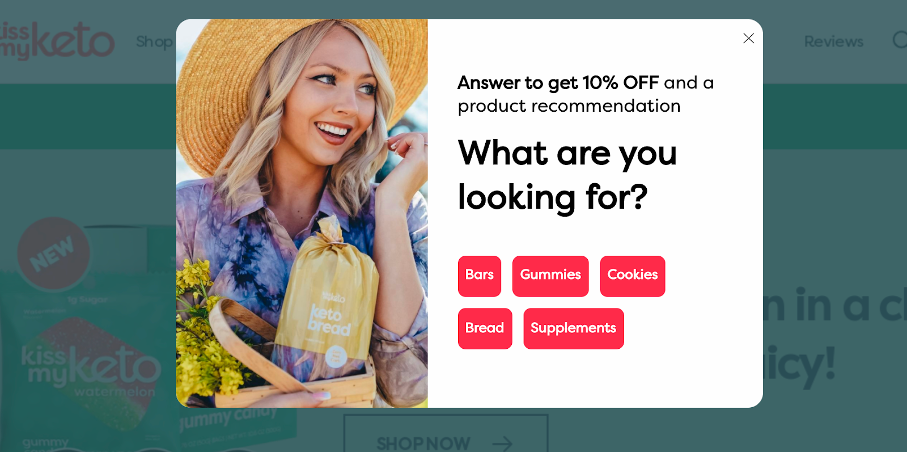
You can use the first stage of the popup to ask for whatever information will be most useful to you for creating segmented campaigns. For instance, instead of asking what new subscribers are interested in, you could ask them about their ideal budget or job title.
Once a potential customer has answered your questions, you can then ask for their email with a very short, simple second step.
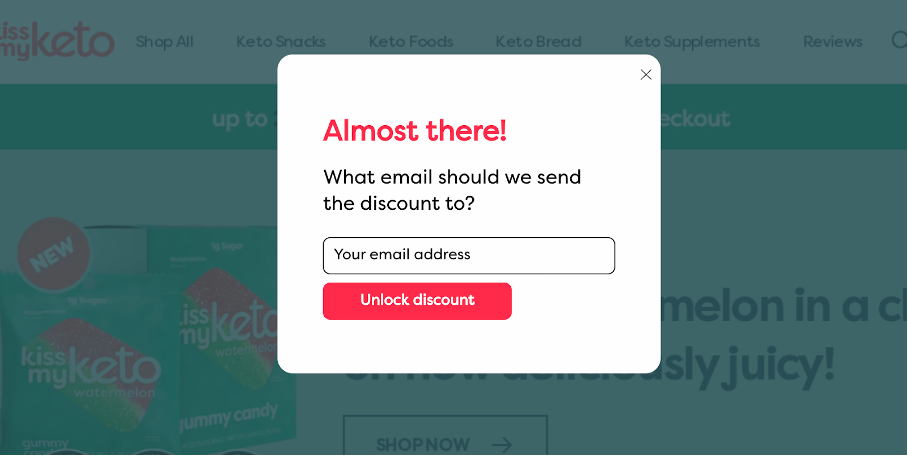
Using this strategy can increase your conversion rates by at least 20% compared to the first strategy. That’s a lot of extra email signups!
And best of all, since you know what each new subscriber is interested in, you can end this sequence by recommending relevant products to them. This helps move your visitors through your sales funnel and increase your sales at the same time as you grow your list.
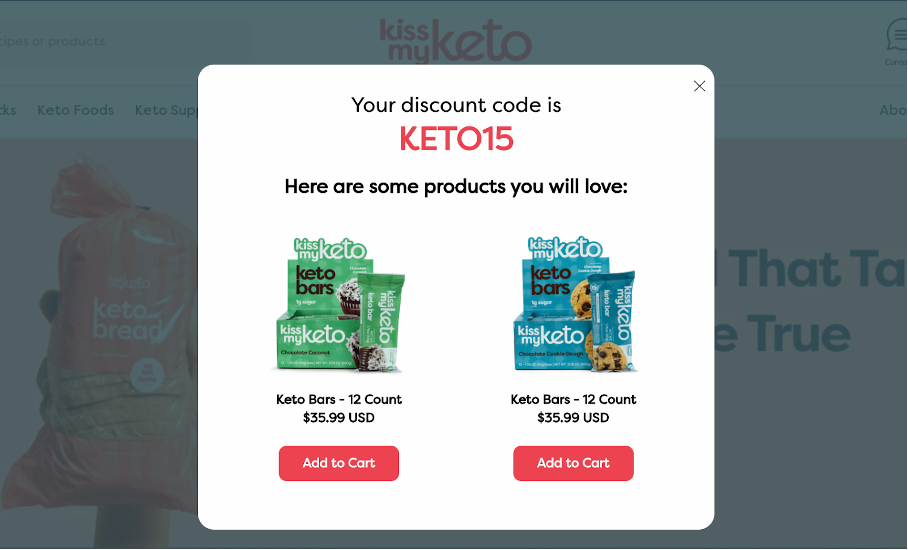
If you’d like to use this email segmentation idea, you can set it up in minutes using one of OptiMonk’s pre-made conversational popup templates below.
3. Reverse the order
Finally, your third list segmentation option is called the “no-loss method.”
First, you ask for the visitor’s email address, and then you ask them your segmentation question.
We call this list segmentation strategy the no-loss method because it solves one of the major problems with strategy #2: the possibility that users will answer the segmentation question but then refuse to provide their email address.
These are “lost” conversions, since you’ve collected segmentation data from a user but you don’t have an email address to associate it with. And that’s exactly why the no-loss method is so great.
Here’s what the first stage of a list-building campaign using the no-loss method could look like:
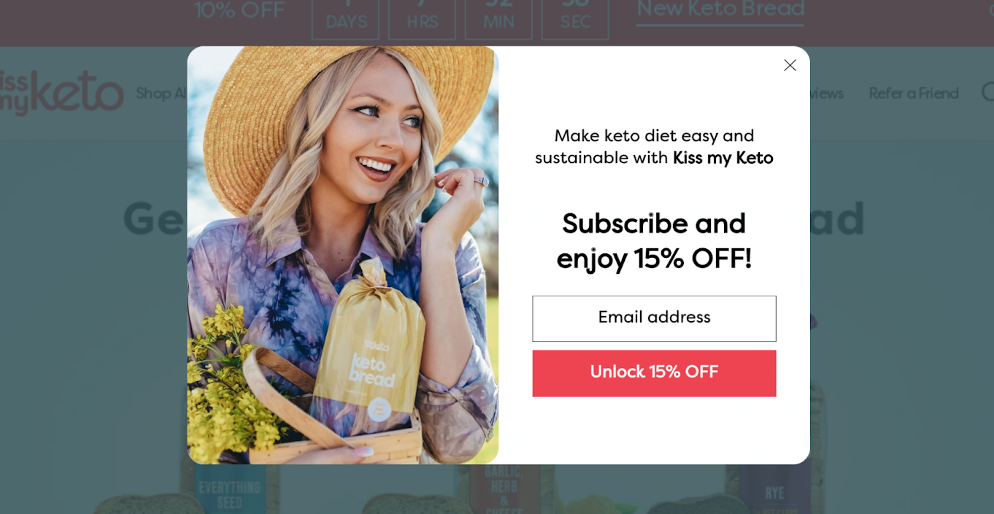
Since everyone has to enter their email address to reach the second stage of the popup, you won’t lose any conversions.
And since it takes so little effort for visitors to declare their interests, almost all of them (95%+) will answer your question! This will help you create email segments that are filled with lots of subscribers.
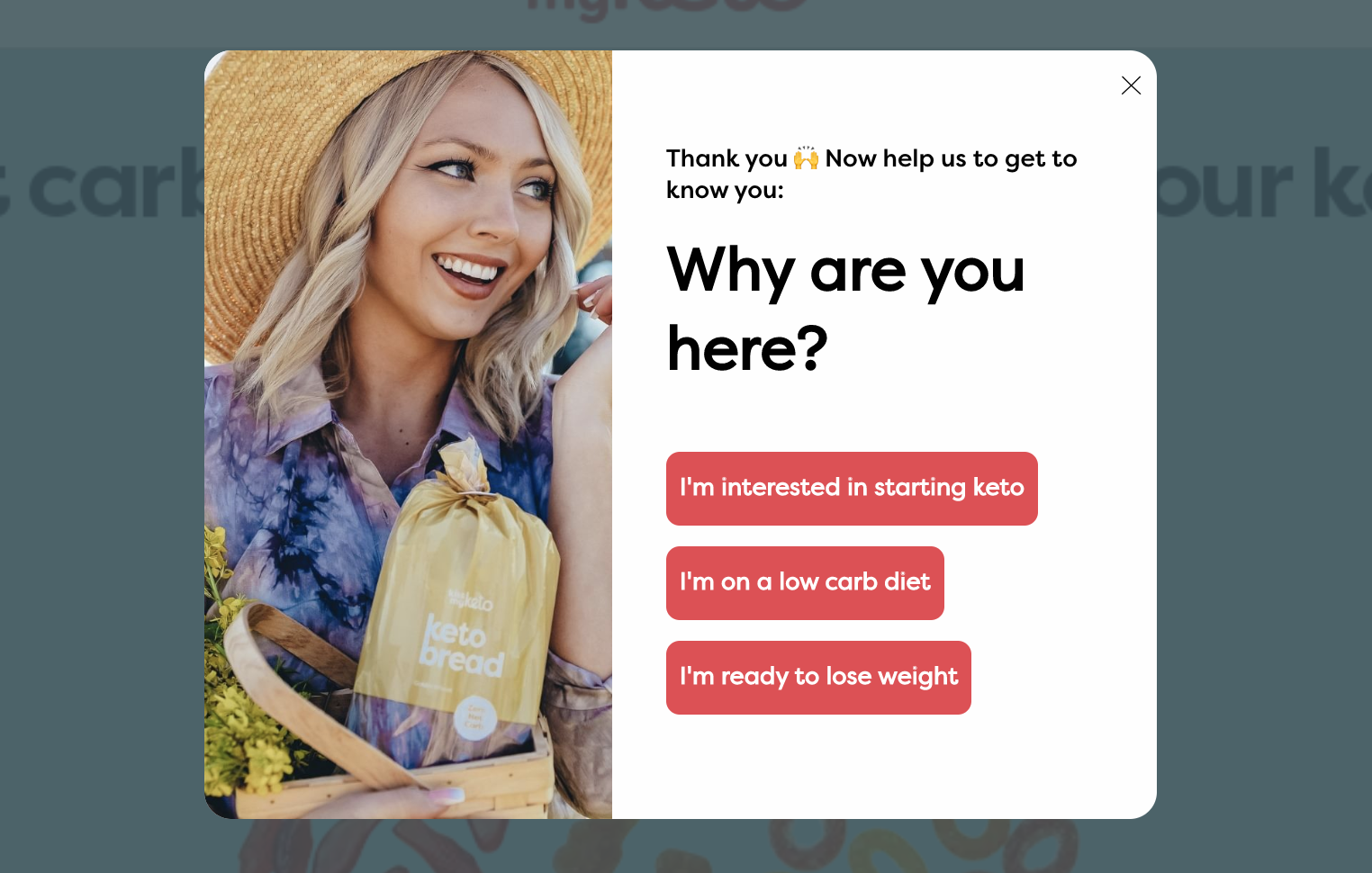
Here are some templates to get you started with this strategy:
FAQ
What is an email segment?
An email segment refers to a subgroup of subscribers within your email list who share common characteristics or behaviors. Segments are created based on specific criteria, such as demographics, purchase history, or email engagement levels, to enable targeted communication with relevant subsets of your audience.
Why is email segmentation important?
Email segmentation is crucial because it allows you to send targeted campaigns to your email recipients based on their needs, preferences, and interests. By delivering personalized content to each subscriber, you can significantly improve open rates, engagement levels, and customer loyalty.
How can I implement email segmentation in my marketing campaigns?
To implement an email segmentation strategy, follow these steps:
- Identify relevant customer data points for segmentation based on your audience and marketing objectives.
- Collect data through sign-up forms, website interactions, or purchase history.
- Use an email marketing platform or CRM system to segment your list based on the collected data.
- Create personalized emails tailored to each segment, incorporating personalized content and offers.
- Monitor campaign performance and adjust segmentation criteria as needed to optimize results. By following these steps, you can effectively implement email segmentation to drive engagement and conversions in your marketing campaigns.
Wrapping up
Email marketing is as important as ever in ecommerce. But consumers now have higher expectations about the content you’re sending them: if you want to engage your subscribers, your email campaigns need to be full of relevant content. And the best way to accomplish that is to segment your email list.
Hopefully, you’ve picked up some actionable information from this article on email segmentation best practices.
You can set up one of OptiMonk’s “no-loss” lead generation campaigns in just minutes and watch your list-building efforts really take off. And since OptiMonk integrates with all the most popular email marketing tools like Klaviyo and Mailchimp, you can easily send the information you collect directly to your email marketing tool.
If you don’t already have an OptiMonk account, create one for free today!
Migration has never been easier
We made switching a no-brainer with our free, white-glove onboarding service so you can get started in the blink of an eye.
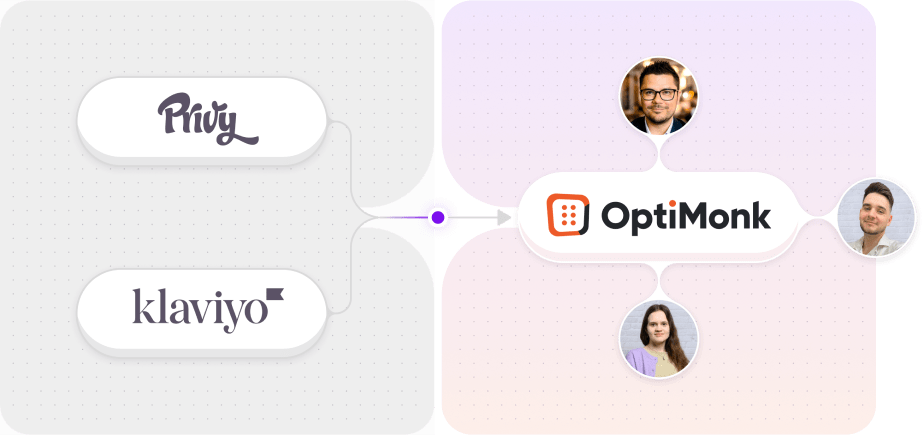
What should you do next?
Thanks for reading till the end. Here are 4 ways we can help you grow your business:
Boost conversions with proven use cases
Explore our Use Case Library, filled with actionable personalization examples and step-by-step guides to unlock your website's full potential. Check out Use Case Library
Create a free OptiMonk account
Create a free OptiMonk account and easily get started with popups and conversion rate optimization. Get OptiMonk free
Get advice from a CRO expert
Schedule a personalized discovery call with one of our experts to explore how OptiMonk can help you grow your business. Book a demo
Join our weekly newsletter
Real CRO insights & marketing tips. No fluff. Straight to your inbox. Subscribe now
Csaba Zajdo
- Posted in
- Marketing
Partner with us
- © OptiMonk. All rights reserved!
- Terms of Use
- Privacy Policy
- Cookie Policy
Product updates: January Release 2025








